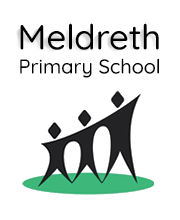Understanding Special Educational Needs (SEN) at Our School
At Meldreth Primary School, we follow the statutory guidance set out in the 2014 ‘Special Educational Needs and Disability (SEND) Code of Practice: 0 to 25 Years’, which outlines how schools should support children and young people with special educational needs and disabilities. You can access the full Code of Practice here.
What is a Special Educational Need (SEN)?
A child is considered to have a special educational need if they require provision that is different from or additional to what is normally available to pupils of the same age. These needs can fall into one or more of the following four broad categories:
1. Communication and Interaction
This includes:
- Speech, language, and communication difficulties
- Autistic Spectrum Condition (ASC), including Asperger’s Syndrome
2. Cognition and Learning
This applies to children who:
- Learn at a slower pace than their peers
- Have specific learning difficulties such as:
-
- Dyslexia (difficulties with reading and spelling)
- Dyscalculia (difficulties with number work)
- Dyspraxia (coordination and motor skills difficulties)
3. Social, Emotional and Mental Health (SEMH) Difficulties
Examples include:
- Anxiety or depression
- Challenging behaviour
- Eating disorders
- Attention Deficit Hyperactivity Disorder (ADHD)
- Attachment disorder
4. Sensory and/or Physical Needs
This includes pupils with:
- Visual Impairment (VI)
- Hearing Impairment (HI)
- Multi-Sensory Impairment (MSI)
- Physical disabilities that require ongoing support or specialist equipment
Our SEND team works closely with families, teachers, and external professionals to ensure every child with additional needs receives the support they need to succeed.
If you have concerns about your child’s learning or development, please don’t hesitate to speak with their class teacher or contact our school’s SENDCo (Special Educational Needs and Disabilities Coordinator) for guidance and support.

